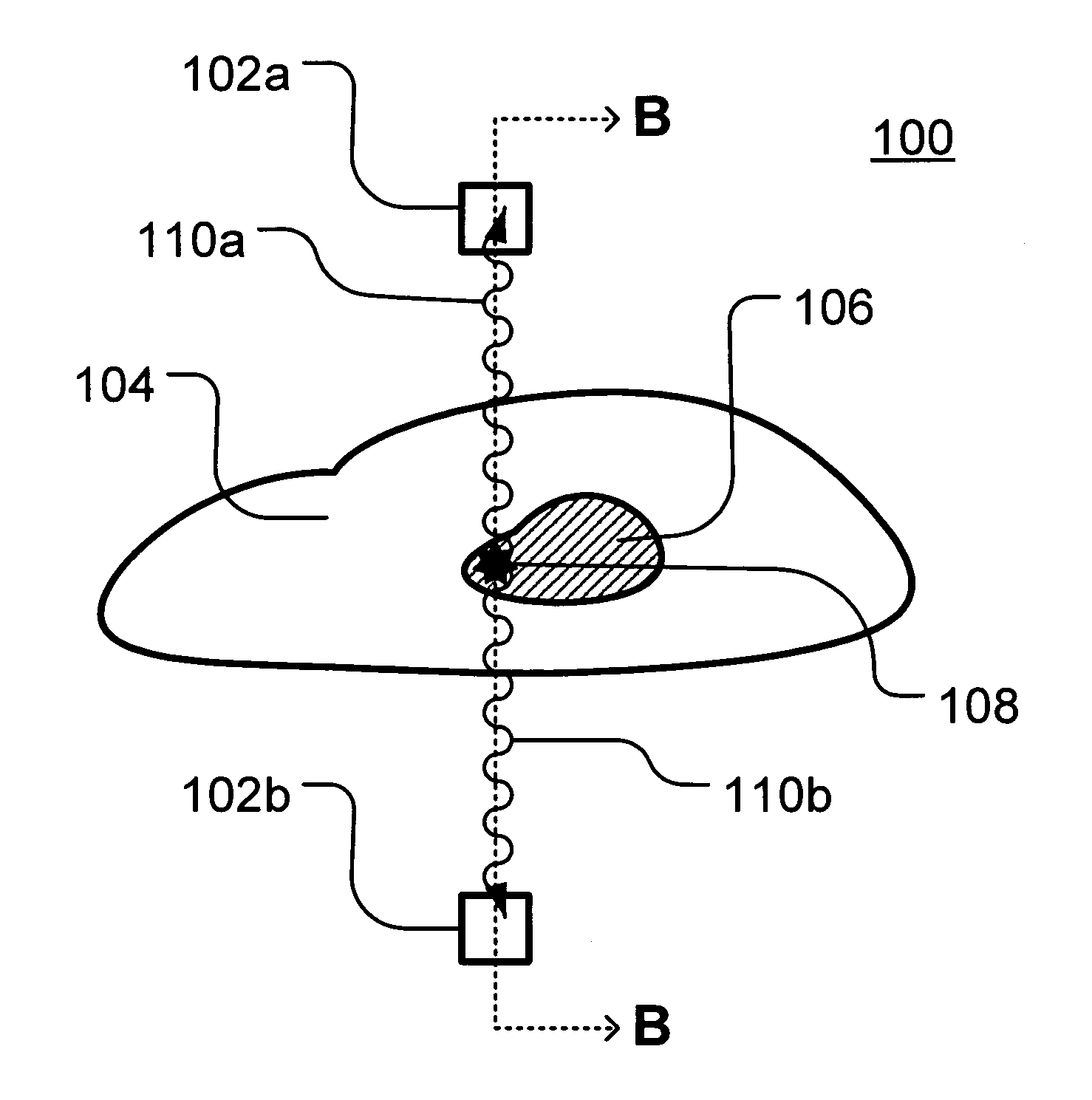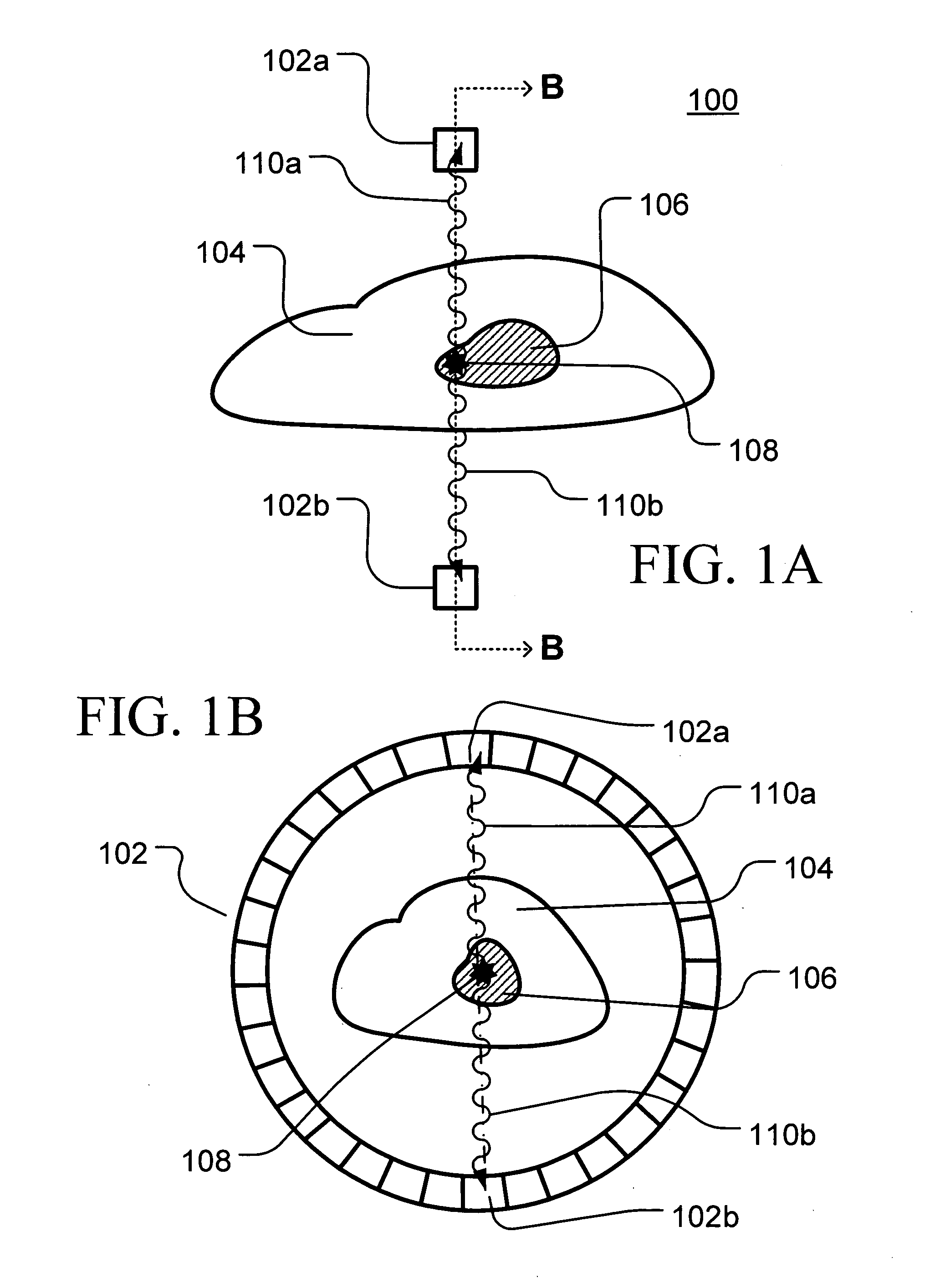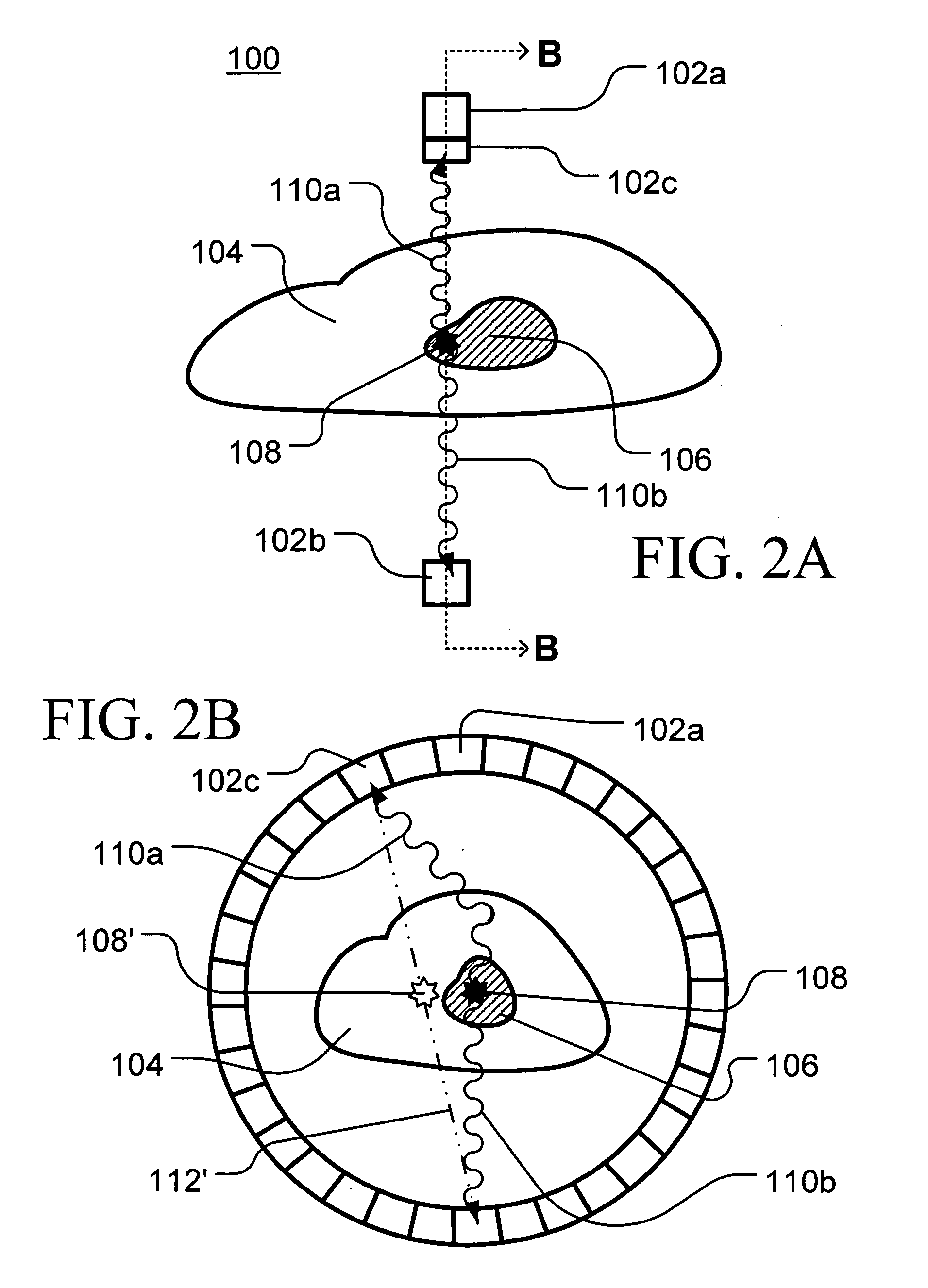System for selecting true coincidence events in positron emission tomography
a technology system, applied in the field of positron emission tomography, can solve the problems of reducing detector efficiency, limiting the statistical precision of image reconstruction, and reducing the number of photons, so as to improve the ability to select data, enhance the selection of true (t), and improve the sensitivity and/or resolution of a pet scanner
- Summary
- Abstract
- Description
- Claims
- Application Information
AI Technical Summary
Benefits of technology
Problems solved by technology
Method used
Image
Examples
Embodiment Construction
[0018] Example embodiments of the invention will now be described more fully hereinafter with reference to the accompanying drawings, in which example embodiments of methods according to the invention are shown. Those of ordinary skill in the art will, however, appreciate that this invention may be embodied in many different forms and should not be construed as being limited to the example embodiments illustrated and described herein. Rather, these example embodiments are provided so that this disclosure will be thorough and complete, and will fully convey the scope of the invention to those skilled in the art. Identical or related reference numerals and designations are used throughout the specification and drawings to identify identical and / or corresponding elements of the illustrated structures.
Compton Cameras
[0019] Conventional Compton cameras 200, as generally illustrated in FIG. 4, include first 206 and second 208 detectors arranged on the same side of an imaging area 202 i...
PUM
 Login to View More
Login to View More Abstract
Description
Claims
Application Information
 Login to View More
Login to View More - R&D
- Intellectual Property
- Life Sciences
- Materials
- Tech Scout
- Unparalleled Data Quality
- Higher Quality Content
- 60% Fewer Hallucinations
Browse by: Latest US Patents, China's latest patents, Technical Efficacy Thesaurus, Application Domain, Technology Topic, Popular Technical Reports.
© 2025 PatSnap. All rights reserved.Legal|Privacy policy|Modern Slavery Act Transparency Statement|Sitemap|About US| Contact US: help@patsnap.com



